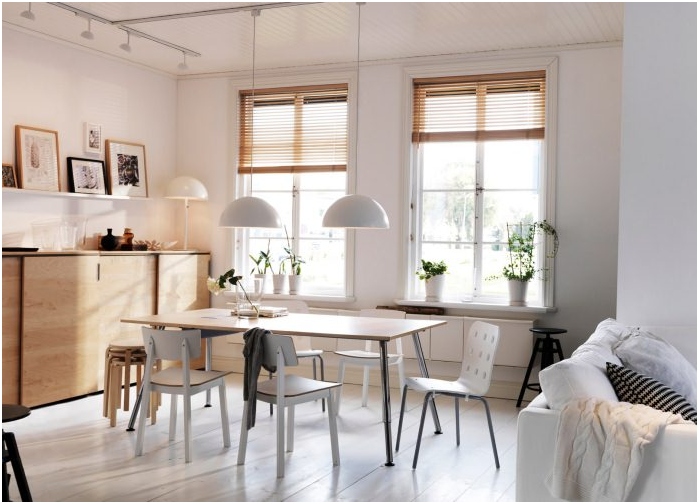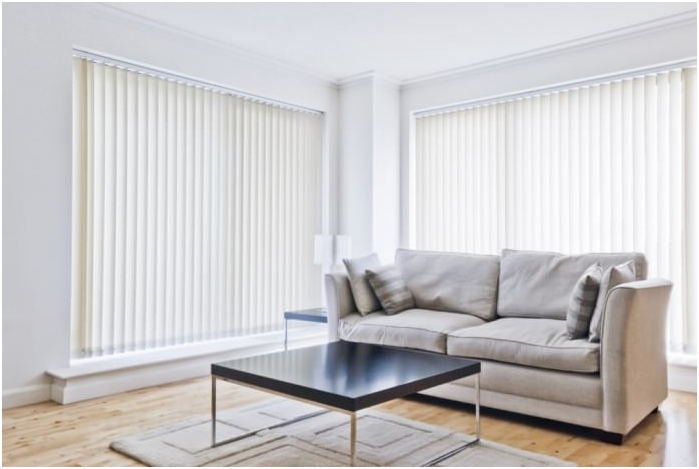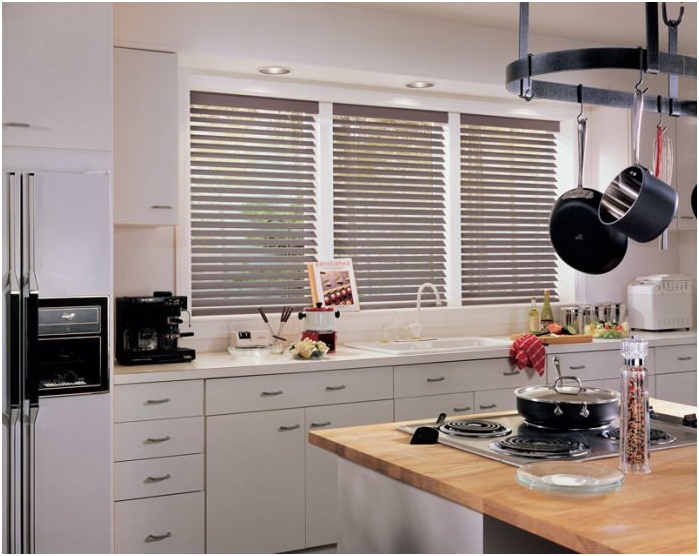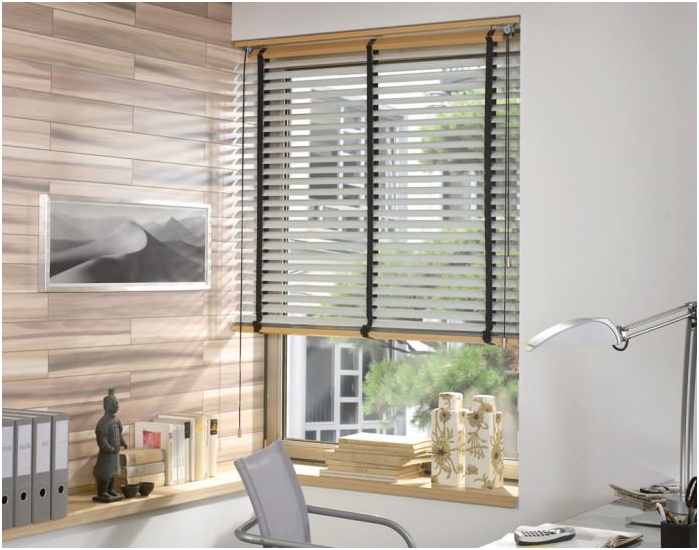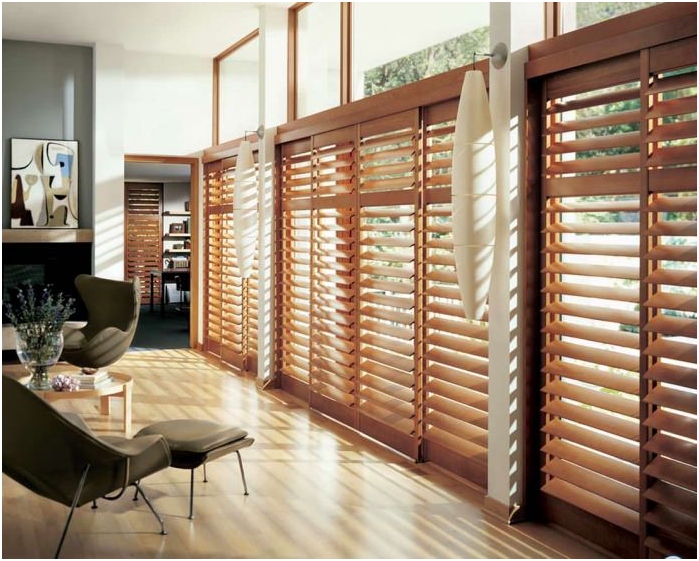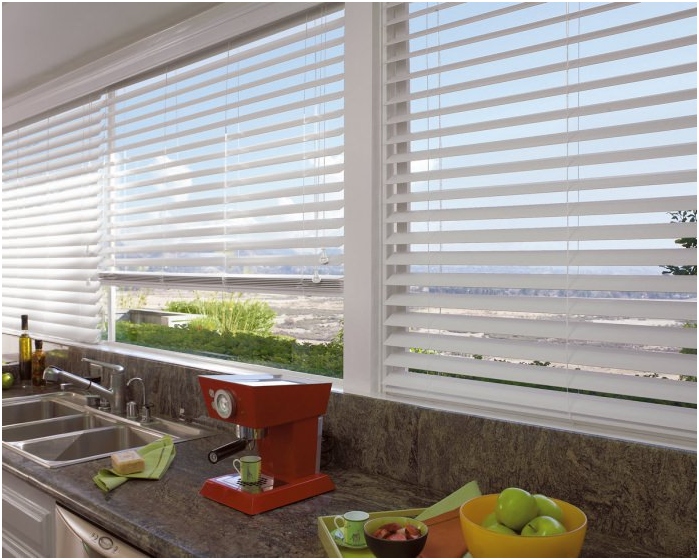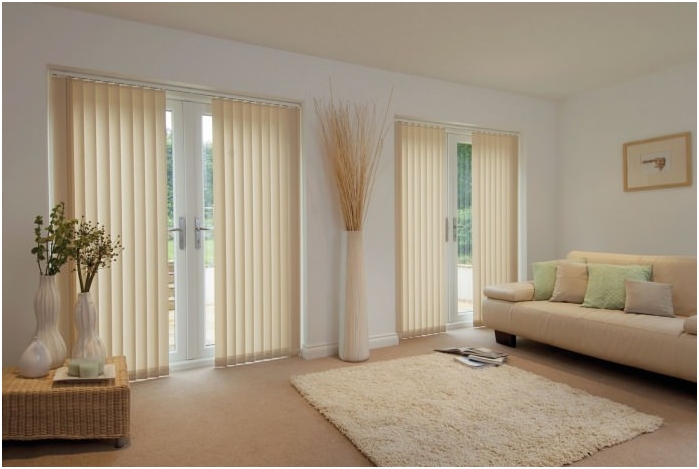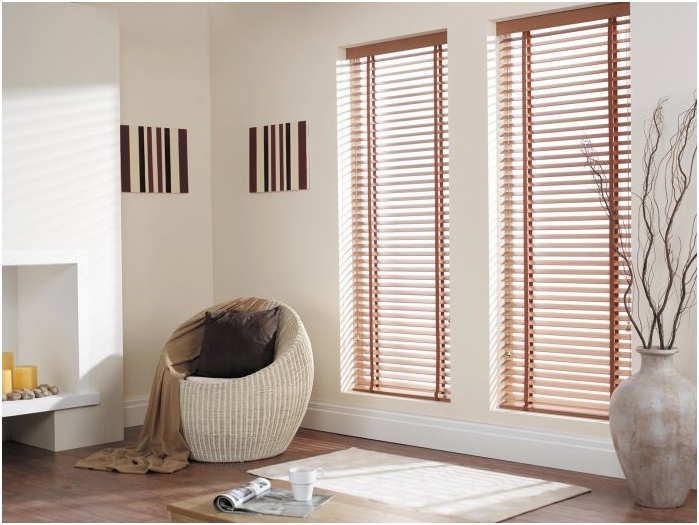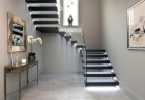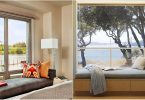It is not so easy to choose blinds for windows among the whole variety of offered options. Each type of blinds has its positive and negative sides. All of them are able to protect from too bright light, to hide from indiscreet glances, but which ones are right for you? To understand this, you need to familiarize yourself with the different types of structures offered on the market..
Design
All types of blinds for windows are divided by type of design into two main types:
- horizontal,
- vertical.
The first ones, with slats (strips) directed parallel to the ceiling, are more traditional and are used more often in office premises. The second, in which the lamellas run perpendicular to the ceiling, are considered more suitable for living rooms..
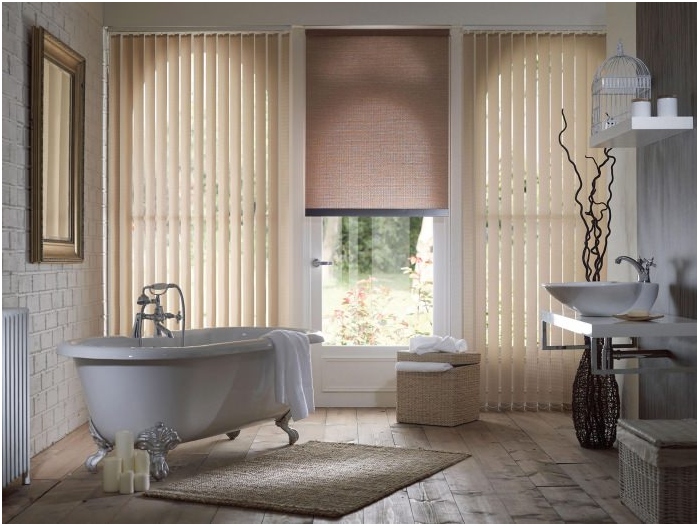
Blinds are also distinguished by the method of attachment:
- fastening outside the window opening (on the frame or on the wall),
- fastening to each casement.
Both horizontal and vertical blinds can be fixed to the wall. Quite often they use fastening directly to each sash, but such fastening is permissible only for horizontal blinds.
When choosing blinds, you need to determine the opening method. There are two of them:
- manual,
- electromechanical.
The second method is mainly used where it is impossible “manual” control. It could be windows “second light”, which cannot be reached without a stepladder, or blinds at the top of windows with arches.
Material
Blinds can be made of various materials, this is what determines their price.
Aluminum
This is the most common and most inexpensive material for making blinds. Of all types of blinds for windows, this one gives, perhaps, the widest possibilities in the design of premises..
Aluminum strips can be painted in almost any color, smooth or matt, with a velvet-like surface, there is also “perforated” lamellas – light passing through perforations in aluminum creates a whimsical play of light and shadow.
pros
- If you are going to choose blinds for windows made of aluminum, the main advantage will be ease of cleaning: just wipe the lamellas with a damp cloth.
- They reflect sunlight well.
- Indoor temperature in summer becomes two to three degrees lower.
Minuses
- Aluminum lamellas are very thin, so they easily bend, wrinkle.
- It is better not to hang them on those windows that are often opened..
- Another minus – “rumbling” lamellas in the wind when airing the room.
Wood
If your choice of blinds is made of wood, be prepared for a solid expense. Wood and, in general, the material is not cheap, and wood for lamellas is especially. Either the Canadian linden tree or the cork tree, which are quite rare and expensive species, are suitable for this. Sometimes lamellas from specially treated pine are used, decorating the interior with a natural wood pattern..
pros
- Wooden blinds are environmentally friendly and last a long time.
- Durable, withstand temperature changes.
- Wood fits almost any interior and makes it more expressive.
Minuses
- Wooden planks of sufficient thickness for the production of lamellas have a considerable weight, therefore large blinds are not made of them, besides, special requirements are imposed on the reliability of fasteners.
- You cannot wash such blinds, you can only wipe with a dry cloth or vacuum.
Plastic
Among all types of blinds for windows, plastic ones occupy a special place. This material is inexpensive, strong enough and stable. It can be used in the production of both horizontal and vertical blinds. In addition, plastic can be given any texture, shape and color, which means that it will be easy to choose blinds for any interior.
pros
- Withstand heat.
- Suitable for wet cleaning.
- Stronger and more resistant to deformation than aluminum.
Minuses
- Cheap low-quality plastic can quickly burn out, as well as collapse due to constant heating (for example, due to a battery placed under a window).
the cloth
For decorating living rooms, designers are advised to choose blinds for windows made of fabric. As a rule, such blinds are vertical in design. They differ in a variety of lamella shapes – they can be not just straight stripes, but have an oblique cut or a semicircle shape.
The denser the lamella fabric, the longer the service life of the blinds. Light transmission also depends on density. For the bedroom, you can pick up fabric blinds with a layer applied on the outside to block light rays.
pros
- The fabric from which the lamellas are made does not fade.
- Durable, easy to hand wash. Usually the basis of such fabric is polyester fiber..
Minuses
- As in the case of plastic, disadvantages arise when using low-quality cheap fabric in the manufacture of blinds.
- Such fabric can fade and quickly deform..

Useful tips when choosing blinds
When choosing vertical blinds, pay attention to the following points:
- Before making a purchase, decide which direction the blinds should move..
- Check if the mechanism is squeaking or jamming in motion. Blinds should move smoothly and silently.
- Correctly calculate the width of the blinds: if they are attached to the wall, then on each side of the window opening, add 10-15 cm.
- The height of the blinds should be at least two centimeters less than the height of the opening in which they are attached, so that folds do not form along the bottom.
- Jalousie “to the floor” should not reach it by five centimeters in order to open and close freely.

